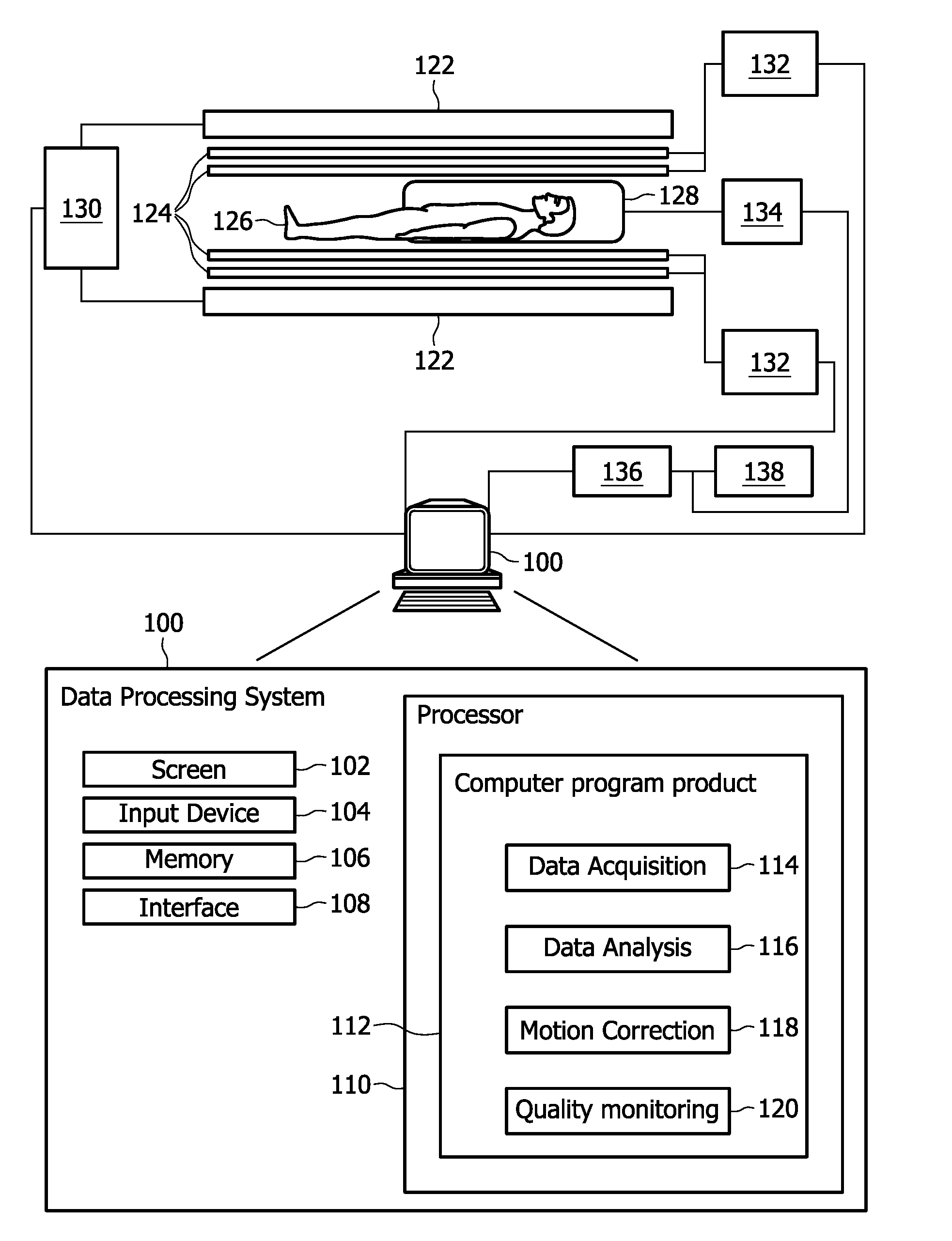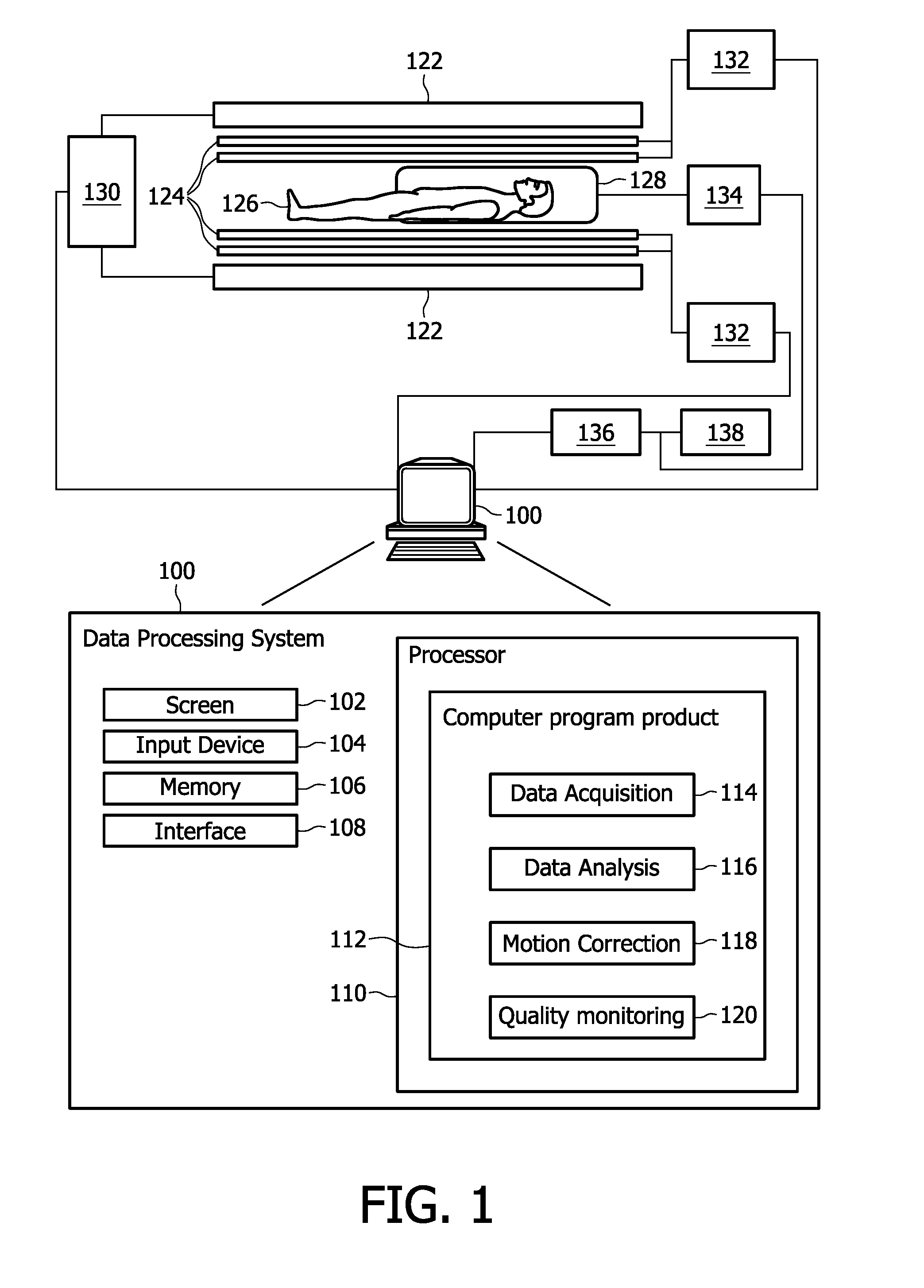Motion corrected multinuclear magnetic resonance imaging
a multi-nuclear magnetic resonance and imaging technology, applied in the field of acquiring magnetic resonance images, can solve the problems of low concentration of biomarkers, local change of image contrast, extra acquisition time, etc., and achieve the effect of increasing the good signal to noise ratio, and easy detection
- Summary
- Abstract
- Description
- Claims
- Application Information
AI Technical Summary
Benefits of technology
Problems solved by technology
Method used
Image
Examples
Embodiment Construction
[0041]In the following, similar elements are designated by the same reference numerals.
[0042]FIG. 1 is a block diagram of an embodiment of a magnetic resonance imaging apparatus. Thereby, only major components of a preferred MRI system which incorporates the present invention is shown in FIG. 1. The magnetic resonance imaging apparatus comprises a data processing system 100, whereby the data processing system 100 typically comprises a computer screen 102, an input device 104 which could for example be a keyboard and a mouse, as well as a memory 106 and an interface 108. Thereby, the interface 108 is adapted for communication and data exchange with typical MRI hardware components. These hardware components comprise for example a main field control unit 130 adapted for controlling the main field of the main magnet coils 122. The main magnets 122 may thereby be adapted as permanent super conducting magnets or being externally driven and switched on and off for each individual usage of ...
PUM
 Login to View More
Login to View More Abstract
Description
Claims
Application Information
 Login to View More
Login to View More - R&D
- Intellectual Property
- Life Sciences
- Materials
- Tech Scout
- Unparalleled Data Quality
- Higher Quality Content
- 60% Fewer Hallucinations
Browse by: Latest US Patents, China's latest patents, Technical Efficacy Thesaurus, Application Domain, Technology Topic, Popular Technical Reports.
© 2025 PatSnap. All rights reserved.Legal|Privacy policy|Modern Slavery Act Transparency Statement|Sitemap|About US| Contact US: help@patsnap.com



